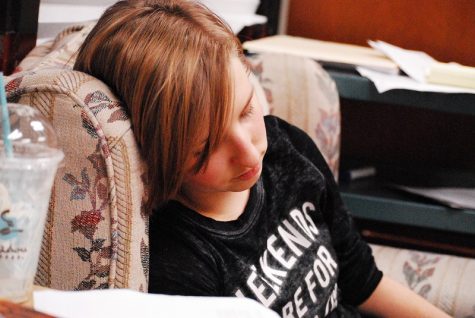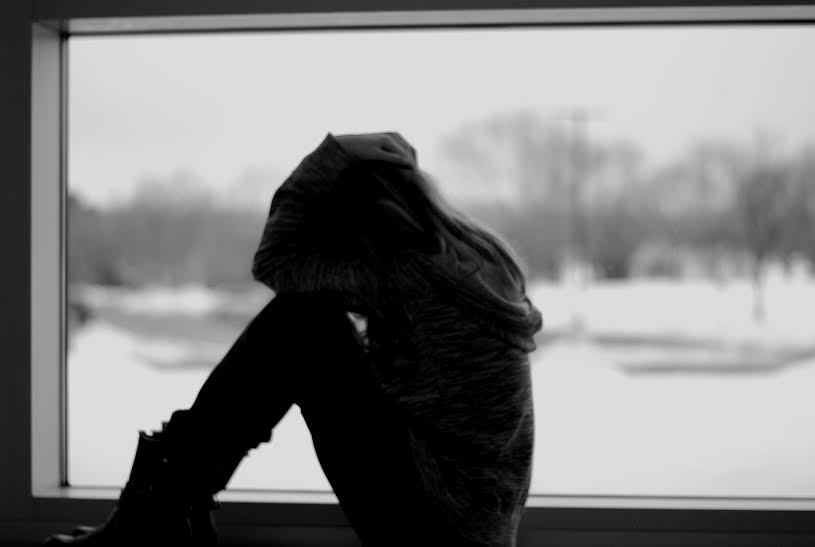A cry for help
Children needing psychological help often go unnoticed in the early grades.
Growing up as a child burdened with mental health problems, I was not aided by modern schooling. The first time I dealt with my mental health at school was when I was six years old, in first grade. I was told to pull a behavior slip for a small mistake I had made and this soon followed with what I now understand was a panic attack. At the time this was a very scary situation for me because I had never faced the problem before. Instead of getting help from the teacher I was endowed with the notion that it was all for attention, which I knew personally was not true. This event is one that mirrors the experiences that many children will face during their lifetime.
Kids are cruel. Kids can break someone down. Kids at an early age develop a skill of how to make another child feel horrible about themselves, through bullying. Elementary school walls are cluttered with posters capitalizing on the problem of bullying, but listening to the conversations in the hallways it soon becomes obvious that these posters aren’t exactly working the way the faculty would hope. This unsuccessful tactic rings through the twenty-two percent of children who report getting bullied in a given school year according to The National Bullying Prevention Center, or PACER. Bullying can be extremely hard on any child, but on a child who is dealing with issues beyond their control, just going to school can become a daunting task too hard to handle. To add to the problem, teachers are not always able to help these children because most are never diagnosed, thirty five to fifty percent in high income countries, and the teacher doesn’t have any idea that there is even a problem with the child‘s mental stability.
The largest problem I faced as a child was how nobody would listen to my cries for help. In school I was labeled the grade’s crybaby, because of my inexplicable inability to control over emotions. With children who deal with this problem, controlling their emotions, a vicious cycle can occur. The cycle begins with a panic attack or uncontrollable outburst, and ends with a child questioning their own sanity. In many schools there are no established resources for elementary aged children to receive help and attention, Cannon Falls Elementary School being one of them. Supplying aid to these children is hard though, especially when they are continually told they are just overreacting and there is nothing wrong with them by teachers.
It wasn’t until I was in the second semester of my freshman year that I went to the doctor the first time for my mental health. If anyone lost count that is nine years after my first encounter with my problem. Personally I believe that is much too long for someone to deal with a problem before getting any help with it. Yes, medication and therapy will not cure everyone but that doesn’t mean it doesn’t help. Just the fact that I was taken to the doctor eased my pain because someone cared enough to do that (it ended up being my mom,).
As a society we need to learn that once a child starts showing a sign of a mental problem they should be taken to the doctor instantly and not let the problem prolong like we are now. I was lucky enough that when I was younger the disability did not impact my school work, but this same fact made it so people thought I was lying because if I was really suffering so would my school work. This view of thinking children are lying is a prominent misconception with mental health.
We need to eliminate the stigmas of mental health. The first is, just because a person is fully functioning does not mean they do not need help. Secondly, nobody has mental health because they want attention. Perhaps some people want attention because they have mental problems but the opposite is not true. And finally, the person dealing with mental health is not broken, they just function differently. These people also may need to take different steps to get to the same outcome as others.
I believe that the first step to helping this problem is to have mental screenings available through school, or at least more accessible. Currently it is near impossible for a younger child to receive screening for their mental health unless brought to the doctor by their parents. If once a year a certified doctor visited a school for optional mental health screenings for children, the percent of children going undiagnosed would diminish significantly.
Currently four out of five adolescents who attempt suicide showed clear warning signs of mental health issues. Although suicide rates among elementary age students is very low, one in one million children, the issue is that there are any children under the age of twelve who believe that suicide is an acceptable way to avoid their problems. This is for children in sixth grade and under! Another haunting fact is that when these children get older one in twelve of them will attempt suicide once in their life according to recent trends. These numbers may be skewed by non-serious attempts , but that is still very high numbers. These kinds of numbers would easily be helped by making therapy more accessible to students.
Currently there is an organization called NAMI, National Alliance on Mental Health, who are trying to push for exactly that. They are urging Health Care providers to send out professionals to schools to perform mental health assessments on students. They also support the Mental Health in Schools Act which is a bill that supports the training of all teachers in schools to be able to identify the early signs of Mental Illness in students so they can report their findings to certified professionals to check the student further.
Many schools are trying their best to get the most help for students as their resources allow them to, and that’s all anyone can ask for. If schools do as much as they can to help it encourages others to do all they can to help also and hopefully can bring a community together to curb this issue.
Everyone needs to do their part. Everyone needs to play their role. And everyone needs to be contributing, because when we come together no child will live in fear.

A pessimistic angsty human specimen who likes to write articles and stuff. Stay Livid.

Katie Allen is a photography editor, who enjoys activities such as Speech, band, and watching John Mulaney's New in Town. When she's not busy reading or...

